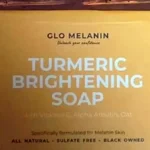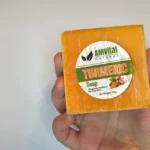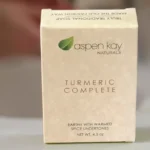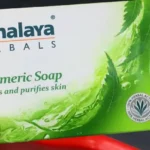Now Reading: An Honest Review of Santoor Soap with Sandal and Turmeric (2025)
-
01
An Honest Review of Santoor Soap with Sandal and Turmeric (2025)
An Honest Review of Santoor Soap with Sandal and Turmeric (2025)

This post may contain affiliate links. Please read our full disclosure here.
When I first picked up a bar of Santoor Sandal and Turmeric Soap, it was more out of nostalgia than necessity. Growing up in India, this soap was a familiar name in every household. Years later, finding it in a store overseas brought back memories of fragrant baths and that distinct, comforting aroma. Naturally, I wanted to see if it lived up to my childhood memories and the promises its packaging boldly claimed. This review is my honest, first-hand account of what using Santoor is like today—based on real experience, without any sugar-coating.
Packaging
The packaging of Santoor soap isn’t fancy, but it does the job. The bright orange and yellow color scheme immediately hints at the key ingredients: sandalwood and turmeric. A youthful woman is usually depicted on the cover, playing right into the brand’s long-time image of the “Santoor Mom” who looks years younger than her age. It’s simple, practical, and easy to open. That said, it still uses plastic wrap, which isn’t ideal for the environment—a drawback in today’s eco-conscious world. It would be great to see the brand take steps towards more sustainable packaging.
It’s worth noting that the soap bar itself has a smooth texture, a pale orange hue, and a curved ergonomic shape, making it comfortable to hold during use. While the wrapper doesn’t allow you to see the soap until it’s opened, it does offer all the necessary information like ingredients, weight, and manufacturer details.
Ingredients
Santoor leans heavily on its Ayurvedic identity, with sandalwood (chandan) and turmeric (haldi) as its hero ingredients. These have been staples in Indian skincare for centuries, known for their soothing, anti-inflammatory, and glow-enhancing properties. The soap also contains glycerin, which helps keep skin moisturized, though not everyone may find it hydrating enough.

The base is made from Sodium Palmate and Sodium Palm Kernelate (derived from palm oil), along with aqua, fragrance, tocotrienols, etidronic acid, and EDTA. It also includes synthetic colorants (CI 45100, CI 11680), so those with very sensitive skin might want to patch-test first. Despite its natural claims, it isn’t certified organic and isn’t labeled hypoallergenic, but the formulation is still gentle enough for most users.
Scent
What hit me first after unwrapping the soap was that classic Santoor scent. Warm, woody, and lightly spicy—it’s unmistakably sandalwood-forward with subtle earthy notes from turmeric. It lingers on your skin, but not overpoweringly so. Personally, I find it comforting and very traditional, the kind of scent you associate with Indian beauty rituals.
Interestingly, the scent isn’t 100% natural—a blend of essential oils and synthetic fragrances makes up its aroma. Despite that, it’s very pleasant and even lingers faintly post-bath, which I like. The fragrance is moderate in strength, unisex, and works well in all seasons.
Lather and Application
If you’re someone who judges a soap by its lather, Santoor won’t disappoint. It lathers up quickly and generously into a rich, creamy foam. Whether you use it directly on your skin or with a loofah, the application is smooth and satisfying. It rinses off easily without leaving any greasy or sticky residue. The bar has a nice grip and the curve fits well in the hand, making it practical to use even till the very end.

Even in hard water conditions, the soap performs well. I found that a small amount goes a long way, making it surprisingly efficient and economical.
Effectiveness
Here’s where Santoor scores high. It cleanses effectively, removing oil, dirt, and impurities while leaving your skin feeling fresh and visibly cleaner. On regular use, I noticed a slight brightening effect, likely thanks to turmeric. It doesn’t promise overnight miracles, but over time, my skin looked more even-toned.
I wouldn’t recommend it for eczema-prone or very dry skin, though—it can be a tad drying in those cases. But for oily to combination skin, it works beautifully. I also noticed that it helped reduce mild sun tan and gave my skin a healthier appearance. Some users even call it the secret to a consistent “golden glow.”
The soap doesn’t clog pores, though it isn’t specifically marketed as non-comedogenic. It also offers a mild deodorizing effect due to its fragrance, which keeps you feeling fresh for hours.
Size and Lifespan
Santoor soap is available in 100g and 125g bars, which makes it a standard size among bath soaps. It also comes in value-friendly multi-packs. What I really appreciate is its hard-milled texture—the bar doesn’t get mushy easily and lasts longer than softer soaps if you store it in a well-draining dish. Even with daily use, a single bar can stretch over several weeks. Just make sure it dries between uses to maintain its integrity.

It doesn’t stain soap dishes or bathroom counters and is sturdy enough not to break into pieces halfway through.
Brand Reputation
One thing that truly stands out about Santoor is its strong brand legacy. Owned by Wipro Consumer Care, it has held a solid presence in Indian households since 1986. Its long-running marketing campaigns, especially the iconic “Santoor Mom” ads, have played a huge role in building trust and emotional connection. For many, including myself, this brand evokes a sense of nostalgia and dependability.
It’s not marketed as a medicinal product like Medimix, but rather as a beauty soap with a traditional Indian twist. While detailed sourcing info for ingredients like sandalwood isn’t available, the brand does emphasize its Indian heritage and uses locally-revered botanicals.
Wipro also states that they don’t test on animals, and the company is involved in broader CSR initiatives like education and ecology, which is always good to know.
Price and Value
This is where Santoor truly shines. Priced around $1.50 to $3.00 per 125g bar in the US, it’s extremely affordable compared to high-end natural or herbal soaps. And when you buy multi-packs, it becomes even more budget-friendly. Considering its durability, pleasant scent, and the benefits of sandalwood and turmeric, I’d say it offers great value for money.
Some buyers do question whether the sandalwood and turmeric extracts are present in meaningful quantities or if it’s just about the fragrance. Still, for the price, it delivers a reliable and enjoyable cleansing experience.
Availability
Despite being an India-based product, Santoor soap is quite accessible in the US and other countries. I found it easily in local Indian stores, and it’s readily available online on platforms like Amazon and Walmart. If you’re living outside India and missing familiar products, this one’s not hard to find.
Many online sellers offer bulk packs and subscription options, and it generally ships quickly and arrives well-packed. For those who use it regularly, buying in bulk makes a lot of sense.
Overall Rating
If I were to rate Santoor Sandal and Turmeric Soap, I’d give it a solid 8.4 out of 10. It’s not perfect, but for an everyday soap that blends affordability with tradition and effective cleansing, it holds its ground very well. I’ve personally enjoyed using it and will likely keep a few bars around for days when I want that familiar scent and feel.
Comparison to Key Indian Soap Competitors
Santoor vs. Mysore Sandal Soap: Mysore Sandal has a purer, more authentic sandalwood fragrance, and feels a bit more premium. Santoor, on the other hand, is gentler on the wallet and has a more balanced fragrance with turmeric notes.
Santoor vs. Medimix Ayurvedic Soap: Medimix leans toward medicinal use with its blend of 18 herbs. It’s great for skin issues but lacks the softness and fragrance appeal of Santoor, which feels more like a beauty soap.
Santoor vs. Hamam: Hamam is marketed as a purifying soap with neem and tulsi. It’s a good germ-fighting option but doesn’t offer the same sensory experience or skin-softening benefits that Santoor does.
Would I repurchase Santoor? Absolutely—especially when I want a reliable, pleasantly-scented soap that reminds me of home.
Santoor Soap
- Pleasant, nostalgic scent
- Affordable pricing
- Good for oily to normal skin
- Contains sandalwood and turmeric extracts
- Long-lasting, hard-milled bar
- Strong brand reputation
- Easy availability online and in stores
- Can be drying for sensitive or very dry skin
- Packaging isn’t eco-friendly
- Contains synthetic fragrance and colorants
- Not hypoallergenic or organic certified
- No information on ingredient percentages











